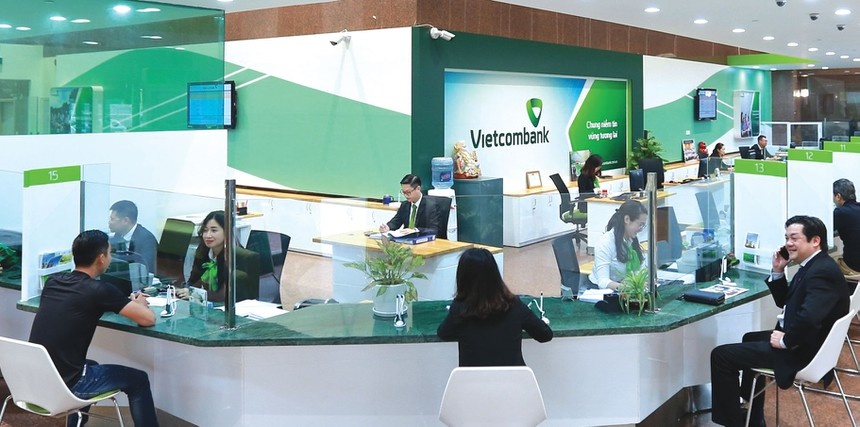Lenders get trendy to lap up increasing youth slice
 |
| Lenders get trendy to lap up increasing youth slice - source: tinnhanhchungkhoan.vn |
Daniel Tabbush, founder of Asian bank research and consulting firm Tabbush Report, believes the retail banking industry in Vietnam is still in its infancy and boasts significant potential down the road.
“Diversifying related products would grease the wheels of banks’ operation, particularly improving profitability ratios and enhancing steady income sources, while also lowering the risk for total loan outstanding,” Tabbush said.
According to Vietcombank Securities (VCBS), retail credit has been the main growth driver over the past five years. The proportion of retail credit increased from 31 per cent in 2015 to 42 per cent of total outstanding loans at the end of Q3.
Since foreign-invested enterprises contribute a large part to Vietnam’s GDP, the increase in the proportion of workers with high-income jobs helps to increase assets and promote the demand for consumer loans.
“Retail and small- and medium-sized enterprise (SME) credits are also preferred by banks when the risk-weighted ratio is lower than that of large corporate loans,” noted Tran Minh Hoang, head of Research at VCBS. “Specifically, retail credit secured by real estate has the ratio determined by loan-to-value ratio and is usually less than 80 per cent. Retail credit with collateral that is not real estate has a risk coefficient of 0.75 and SME credit has a risk coefficient of 0.9. Large enterprises in industries with high-risk weight such as real estate are not favoured and have partly shifted their capital needs to corporate bonds market.”
In particular, home loans and car loans are the current two retail items with significant balances, and the scale of these two products is growing fast every year.
A boom in the real estate and financial sectors in the past two years, according to Hoang, also contributed to an increase in retail credit. Privately held banks with plentiful equity capital, a dynamic operating strategy, extensive data, and compliance with international risk management standards are permitted a larger credit growth limit and have credit growth that surpasses the system’s average level.
Meanwhile, UOB Vietnam revealed declines in overall retail sales accelerated for the fourth straight month in November, declining by 8.7 per cent on-year. However, retail sales and other related service sectors are predicted to gradually recover with the reopening of inbound tourism.
Pham Thuy Duong, deputy director of the Research Centre at Dragon Capital, also testified that the total household debt to GDP ratio in Vietnam currently is roughly 30 per cent, which is lower when compared to other regional peers such as Thailand or Malaysia.
Furthermore, she highlighted, personal loan products in Vietnam have a relatively low penetration rate. Credit cards, for example, have penetrated just 8-10 per cent of the overall population, although in other nations, this figure has climbed to 40 per cent, and even up to 95 per cent in Singapore.
“This demonstrates that the retail market in Vietnam still has tremendous prospects that commercial banks may capitalise on,” Duong added.
Some banks have witnessed their net profit from retail customers climb more than the average of 50 per cent. In particular, millennials and Gen-Z individuals are now among the most important generational demographics in Vietnam’s retail market, thus they are also the target customers of financial services.
The retail arena is not exclusive to privately-run banks, and some state-owned banks are following suit. Vietcombank has escalated its retail services as a part of its strategic plan, with retail outstanding loans accounting for more than 54 per cent of the overall loan structure.
BIDV, with the active involvement of South Korean group KEB Hana Bank, is likewise pushing digitally-led reform and intensifying retail banking development.
Tran Thu Huong, head of Strategy and Retail Banking at VIB, noted the retail segment makes up 70 per cent of VIB’s overall earnings. VIB is bullish in its retail loan segment since 90 per cent of its customers have solid collateral.
“Millennials and Gen-Z account for almost 65 per cent of VIB’s total customers and it is predicted that by 2025, this segment would account for around 85 per cent,” Huong noted. “The behaviour of this group is radically different from that of consumers in their 50s or 60s, with habits paving the way for advanced banking services, such as investing and online shopping.”
What the stars mean:
★ Poor ★ ★ Promising ★★★ Good ★★★★ Very good ★★★★★ Exceptional
Related Contents
Latest News
More News
- Tax sector wraps up 2025 and sets priorities for next year (December 25, 2025 | 14:00)
- A tipping point for digital and hybrid wealth management in Vietnam (December 23, 2025 | 13:33)
- $250 million deal targets women-owned SMEs, sustainable agriculture (December 22, 2025 | 17:40)
- Stock market posts resilient 2025 performance (December 19, 2025 | 18:17)
- Citi Vietnam receives 2025 AmCham CSR recognition (December 19, 2025 | 16:35)
- As global green supply chain reshapes, will Vietnam be left behind? (December 19, 2025 | 08:00)
- Banks gear up for massive capital increases (December 18, 2025 | 17:04)
- Securing capital and efficiency for Vietnam’s 2026-2030 growth ambitions (December 17, 2025 | 10:00)
- Energy sector in need of blended finance mechanisms (December 17, 2025 | 09:00)
- Vietnam still has room to mobilise capital for sustainable growth (December 17, 2025 | 08:57)

 Tag:
Tag:





















 Mobile Version
Mobile Version